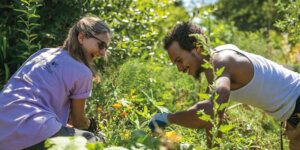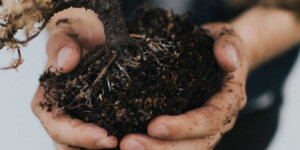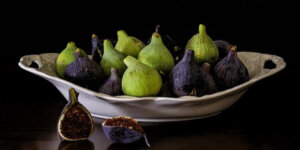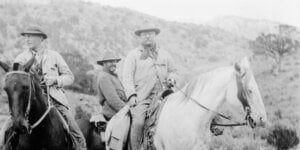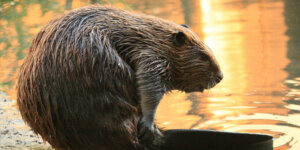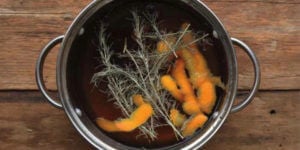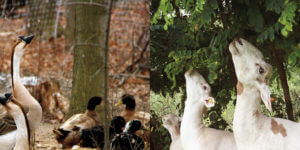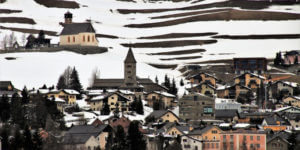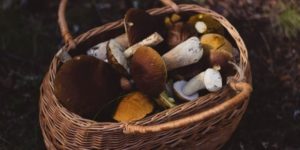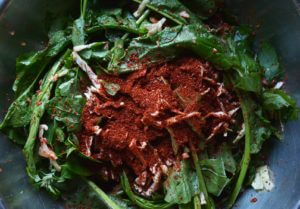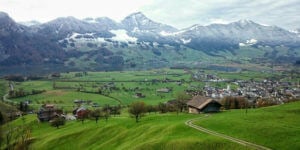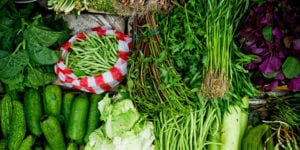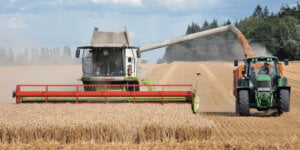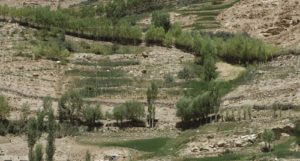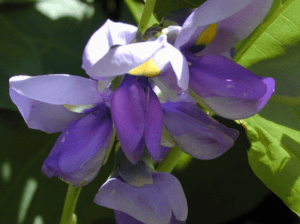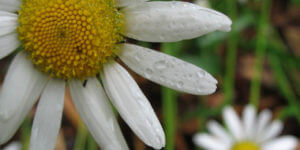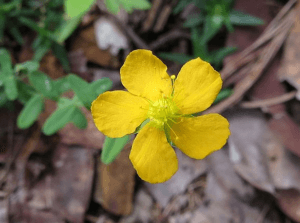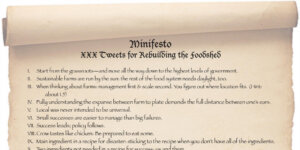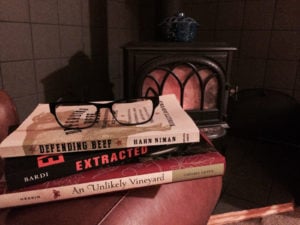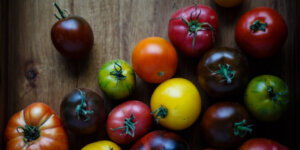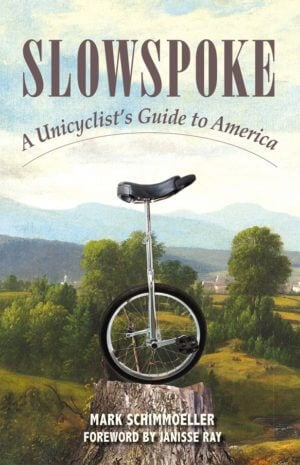Chelsea Green Blog
Nature & Environment
Food Forests: What is a Community Food Forest?
The recent rise of community food forests and similar projects have come at an imperative time. More than 80 percent of the US population now resides in urban areas. This number is projected to rise in the next few decades. Not only can food forests provide a local source of food they can also serve…
Read MoreFocusing on Soil Remediation with Fungi
Nature does what needs to be done if we let her. We can do two main things to assist her along the way and promote soil remediation. One: Promote healthy plant metabolism as the guiding paradigm in growing anything. And two: Think and think again about ways to least disturb the soil ecosystem. Our overarching…
Read MoreOur Favorite Summer Reads
Wondering what to read this summer? Don’t worry, we have you covered! Grab your towel and claim the best pool chair or relax at your homestead with one of these perfect summer reads. Whether its nature reads, to healing your gut, everything wild, or inspirational books you’ll have your nose in a book all summer long…
Read MoreFig Trees: Snakes and Ladders & Tantalising Figs
You ever think about how important fig trees are to ecosystems all over the world? Me neither… until I read Gods, Wasps, and Stranglers. The complex nature of these trees and their interdependence with their surroundings is beyond fascinating. “As our planet’s climate changes and reminds us that nature really does matter, the story [of fig…
Read MoreBadlands without Beavers: How Teddy Roosevelt became a conservationist
There’s no doubt that beavers offer huge support to various ecosystems. Even Teddy Roosevelt learned that when on a hunting trip to beaverless badlands turned out disappointing. This experience was enough to turn him from naturalist to conservationist. Read the full story and you too will become a “Beaver Believer.” The following excerpt is from Eager by…
Read MoreThe Surprising, Secret Life of Beavers and Why They Matter
“Beavers, the animal that doubles as an ecosystem, are ecological and hydrological Swiss Army knives, capable, in the right circumstances, of tackling just about any landscape-scale problem you might confront.” From promoting salmon populations to capturing more water for agriculture, author and “Beaver Believer” Ben Goldfarb wants us all to appreciate beavers more. A better…
Read MoreBrewing California Sagebrush Beer: The Foraging Brewer
Hyperlocal brewing, making concoctions only out of the ingredients available in your immediate environment, is a fun way to become more familiar with your surroundings and the possibilities within them. According to wildcrafting author Pascal Baudar, “the number of possible ingredients you can use is mind boggling.” And the end results can be so rewarding! The…
Read MoreSilvopasture: What in the world is it?
Have you heard of silvopasture? This system of managing grazing animals in a temperate forest ecosystem is quite common in Europe but it didn’t quite make its way over to North America with the colonists. They must not have realized the benefits of silvopasture: healthier animals, better soil, less pest control and mowing, and climate…
Read MoreVictory Over Big Ag: How a small town said “Yes!” to a pesticide-free future
A Precautionary Tale shares the inspiring story of a group of citizens in Mals, Italy who fought Big Ag and won and, in doing so, became the first place on Earth to ban pesticides by a referendum vote. Their colorful, courageous, and ultimately savvy campaign is being heralded around the world as a landmark effort in…
Read MoreForaging for Mushrooms: Gourmet Root Systems
For people who enjoy foraging for food in the wild, there are plenty of mushrooms to choose from — “ten thousand mushroom species to be considered on the North American continent alone”. But foraging for mushrooms should never be thought of as a game of chance. You need to know all the clues when it comes to identifying…
Read MoreStrong, Spicy, and Pleasant: Wild Green Kimchi
Experiment with what you have, anything from the mustard family will work extremely well.
Read MoreHow One Small Town Banned Pesticides: Freedom from Poison
The recent uncovering of The Poison Papers—a collection of documents revealing years of apparent collusion between companies producing pesticides and other chemicals and regulatory agencies such as the EPA—shows just how difficult it is to stop corporate, agricultural, and other powerful interests from spraying dangerous chemicals, even when human health and the environment are at…
Read MoreOrganic No-Till: Farming like the Earth Matters
If we could do one thing for the planet it would be to ditch the plough. When we turn over soil, the air and sun wreak havoc on the microbes, which is why we need chemicals to bring the fertility back. No-till creates thin furrows in the soil and drops seeds in. It’s difficult to…
Read MoreWinter Reads: Books to Curl Up with this Season
William Wordsworth was right when he said, “Nature never did betray the heart that loved her.” Nevertheless, the cold, dark days of winter can still get the best of even Nature’s most tenderhearted admirer. What’s one to do? We here at Chelsea Green have concocted the perfect cabin fever remedy with our suggested winter reading…
Read MoreYour Baby’s Microbiome: The 10 Steps that Establish It
Research is emerging almost daily on the role of the microbiome in human health. But how do we acquire this mysterious community of microbes and more importantly how do we make sure the good bacteria outnumber the bad? According to a new book by Toni Harman and Alex Wakeford, Your Baby’s Microbiome, it all starts…
Read MoreWhy Modern Wheat Is Making Us Sick
Why is modern wheat making us sick? That’s the question posed by author Eli Rogosa in her new book Restoring Heritage Grains. Wheat is the most widely grown crop on our planet, yet industrial breeders have transformed this ancient staff of life into a commodity of yield and profit—witness the increase in gluten intolerance and…
Read MoreTo Create Climate-Secure Foodscapes, Think Like a Plant
The techniques and prophetic vision for achieving food security and foodscapes in the face of climate change contained in Gary Paul Nabhan‘s Growing Food in a Hotter, Drier Land may well need to be implemented across most of North America over the next half-century, and are already applicable in most of the semiarid West, Great…
Read MoreLDN Treatment Helps to Kill Cancer Cells
According to a report in The International Journal of Oncology, giving low dose naltrexone (LDN) to cancer patients can improve the immune system’s ability to kill cancerous cells, as well as improve the efficacy of standard cancer treatments and immunotherapy. This major breakthrough gives research credence to what some doctors have observed in their cancer…
Read MoreAbundant Kudzu: Uncovering the Many Uses
Tao Orion, author of Beyond the War on Invasive Species, and Katrina Blair, author of The Wild Wisdom of Weeds, share alternative approaches to understanding and managing Kudzu. Classification: Pueraria lobata Geographic location: Southeast Description: Kudzu is a group of plants that are climbing, coiling, and trailing perennial vines. The plant climbs over trees or shrubs…
Read MoreOxeye Daisy: A Plant for the Pollinators
As Invasive Species Week continues, Tao Orion, author of Beyond the War on Invasive Species, and Katrina Blair, author of The Wild Wisdom of Weeds, are sharing alternative approaches to managing and using plants considered to be “invasive.” In this excerpt, they discuss the oxeye daisy. Classification: Leucanthemum vulgare Geographical location: Western states, Pacific northwest…
Read MoreToo Much St. John’s Wort? Look to the Cows
No matter what part of the country you live in, non-native plant species take root and thrive. Dubbed “invasive,” these species are often considered an annoyance at best and aggressively eradicated with harmful chemicals at worst. They are deemed enemies of the land and have become targets of an ongoing war fought with a steady…
Read MoreA Mini-Festo for Earth Day – Rebuild the Foodshed
For the days leading up to Earth Day in years past, author Philip Ackerman-Leist runs a Twitter MiniFesto campaign – each day sending out a new tweet designed to spark conversation and pass along some lessons he learned whilst working on his book, Rebuilding the Foodshed. You might also know Philip as the author of…
Read MoreWinter Reads: 10 Books to Curl Up With This Winter
William Wordsworth was right when he said, “Nature never did betray the heart that loved her.” Nevertheless, the cold, dark days of winter can still get the best of even Nature’s most tenderhearted admirer. What’s one to do? We here at Chelsea Green have concocted the perfect cabin fever remedy with our suggested winter reading…
Read MoreHow to Save Tomato Seeds
As your favorite variety of home grown tomatoes start ripening on the vine this summer, be sure to save those seeds for next year’s planting. It takes a bit of care to get the seeds out of the gelatinous tomato goo they’re suspended in, but once you’ve done it you can use those seeds to…
Read MoreA Trip on A Unicycle: One Man, One Wheel, and the Open Road
Mark Schimmoeller’s Slowspoke: A Unicyclist’s Guide to America is about more than a cross-country trip on a unicycle; it’s a meditation on a way of life that Americans find increasingly rare: one that practices a playful, recalcitrant slowness. Award-winning author Janisse Ray (The Seed Underground) identifies with this pace. “Schimmoeller’s narrative—of his slow and deliberate journey…
Read More

